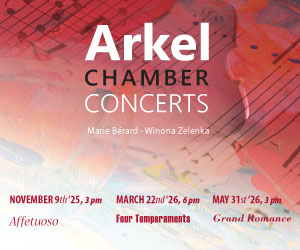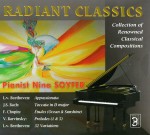 In this debut release (recorded at Glenn Gould Studio), Radiant Classics (Really Records RR 2017002, really-records.com), Nina Soyfer demonstrates her innate ability to meet the stylistic demands of a remarkably varied program. This admirable skill rests on the foundation of an impressive keyboard technique and artistic insight. She performs the Bach Toccata in D Major BWV912 with freedom and sensitivity. The Fugue in particular dances beautifully under the lightness of her touch.
In this debut release (recorded at Glenn Gould Studio), Radiant Classics (Really Records RR 2017002, really-records.com), Nina Soyfer demonstrates her innate ability to meet the stylistic demands of a remarkably varied program. This admirable skill rests on the foundation of an impressive keyboard technique and artistic insight. She performs the Bach Toccata in D Major BWV912 with freedom and sensitivity. The Fugue in particular dances beautifully under the lightness of her touch.
The disc opens with Beethoven’s 32 Variations on an Original Theme in C Minor WoO 80 and closes with his Appasionata Sonata. The Variations demand many changes in mood and the sonata depends greatly on the convincing delivery of the first movement’s heroic theme. Soyfer comes to these works with an unerring sense of who Beethoven is in all his emotional complexity, and creates an experience that is both authentic and profound.
The recording’s most interesting pieces are the two Preludes by Ukrainian composer Vasyl Barvinsky. Not many of his works survive. His late-Romantic, impressionistic style is highly crafted and somewhat reminiscent of Chopin. Soyfer brings considerable emotion and power to his music, leaving the clear impression that more of it needs to be heard.
Listen to 'Radiant Classics' Now in the Listening Room
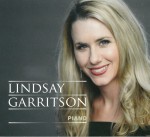 Lindsay Garritson is no stranger to competitions, touring and live performance. Her impressive list of achievements makes this first disc, Lindsay Garritson, piano (lindsaygarritson.com), a welcome recording. It shows the intensity of her style and the eloquent expression of which she is so remarkably capable.
Lindsay Garritson is no stranger to competitions, touring and live performance. Her impressive list of achievements makes this first disc, Lindsay Garritson, piano (lindsaygarritson.com), a welcome recording. It shows the intensity of her style and the eloquent expression of which she is so remarkably capable.
She begins the disc with the Liszt Rhapsodie Espagnole S.254. It’s a full-on engagement with all the power and nuance that the composer’s work requires. The major item on the CD is the Schumann Sonata No.3 in F Minor Op.14. Its four movements demand a great deal of scope from the performer, from the often deep introspection of the second and third movements to the blazing technique of the Finale. Garritson’s technical and interpretive abilities are inspiring. She has clearly lived with this piece for a long time and justifiably owns it.
Rachmaninov’s setting of the Kreisler Liebesleid completes her program in a show of capricious keyboard genius. It’s the kind of playing that brings audiences to their feet after encores. You can do it in the privacy of your living room – your secret will be safe with us.
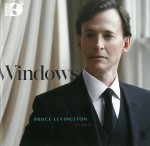 This beautiful CD Windows (Sono Luminus DSL 92218 sonoluminus.com) is the seventh in Bruce Levingston’s discography. The main work is Schumann’s Kinderszenen Op.15. Levingston proves himself an artist whose first impulse is to find and reveal a composer’s most fragile moments. His ability to do this is quite disarming. The best example of this is Träumerei. Not since Horowitz played this as the encore in his 1986 Moscow concert near the end of his life, have I heard such playing. Words completely fail. Levingston brings this approach to the whole piece and thereby creates something quite unlike anything recorded of late.
This beautiful CD Windows (Sono Luminus DSL 92218 sonoluminus.com) is the seventh in Bruce Levingston’s discography. The main work is Schumann’s Kinderszenen Op.15. Levingston proves himself an artist whose first impulse is to find and reveal a composer’s most fragile moments. His ability to do this is quite disarming. The best example of this is Träumerei. Not since Horowitz played this as the encore in his 1986 Moscow concert near the end of his life, have I heard such playing. Words completely fail. Levingston brings this approach to the whole piece and thereby creates something quite unlike anything recorded of late.
The other works on the CD are commissions from two contemporary composers. The Shadow of the Blackbird by David Bruce is the program’s opening piece and is very much in the character of the Schumann that follows it. It’s deceptively simple yet searching and contemplative. A perfect beginning to Levingston’s program.
The CD’s title tracks Windows are James Matheson’s five-movement composition inspired by the stained glass windows of Marc Chagall and Henri Matisse. Matheson uses the piano’s colours very effectively in his writing. Levingston plays this in a way that draws an interpretive thread convincingly through the works of all three composers.
 Liza Stepanova takes an unusual and creative approach to her new CD Tones & Colors (Concert Artists Guild CAG 120 concertartists.org). Using paintings as the inspiration for her four-part program, she blends music from Bach to Ligeti into themes depicting A Spanish Room, Nature and Impressionism, Conversations Across Time, and Wagner, Infinity and an Encore.
Liza Stepanova takes an unusual and creative approach to her new CD Tones & Colors (Concert Artists Guild CAG 120 concertartists.org). Using paintings as the inspiration for her four-part program, she blends music from Bach to Ligeti into themes depicting A Spanish Room, Nature and Impressionism, Conversations Across Time, and Wagner, Infinity and an Encore.
It’s a skillfully assembled repertoire list and beautifully played throughout. A number of tracks stand out. El pelele by Granados makes a brilliant opening, with its rich harmonies and sparkling writing. Stepanova has equal success with the three impressionist pieces in the second set. Fanny Hensel’s September: At the River is especially effective.
The third set uses four pieces in the key of E-flat minor. A Bach Prelude and Fugue BWV853, George Crumb’s Adoration of the Magi and a second fugue by Lyonel Feininger based on the subject used by Bach in his fugue. It’s quite striking to hear how the shared key draws these disparate works so tightly together.
Stepanova begins her final set with Liszt’s transcription of Wagner’s Overture to Tannhäuser. It’s magnificent playing that captures the grand scale of Wagner’s work, from the solemn chorale-like opening to its towering climax. Ligeti’s Etude No.14 Infinite Column is a devilish piece to perform and reveals Stepanova’s true power at the keyboard. A graduate of Juilliard and a seasoned performer, Stepanova is one to follow in the piano world.
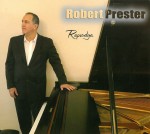 Robert Prester may be better known today as an accomplished jazz pianist, but his new CD Robert Prester – Rapsodya (robertprester.com) is a reminder of his many years as a young pianist absorbing the classical repertoire. The learning of this period has shaped his playing with a light and precise touch, a keen interpretive impulse focused clearly on emotion, and a remarkable grasp of musical architecture.
Robert Prester may be better known today as an accomplished jazz pianist, but his new CD Robert Prester – Rapsodya (robertprester.com) is a reminder of his many years as a young pianist absorbing the classical repertoire. The learning of this period has shaped his playing with a light and precise touch, a keen interpretive impulse focused clearly on emotion, and a remarkable grasp of musical architecture.
This new recording contains the Beethoven Sonata No.12 in A-flat Major Op.26 performed with a fresh and energized enthusiasm – as if it were a world premiere. Debussy’s Jardins Sous la Pluie is an impressive example of Prester’s keyboard agility. The Bach Prelude and Fugue No.6 in D Minor WTC Book II is an excellent example of the musical discipline and intuition that Prester brings to all his playing.
The real gem on this disc, however, is Prester’s own composition. The Sonata in F Minor is a fusion of classical and jazz harmonies. It adheres closely to the structure of sonata form but is deeply imbued with the harmonic clusters, intervals and rhythms we associate intimately with jazz. This mix is seamless and well balanced. If anything, it’s a reminder of our enduring tendency to keep these two genres isolated in their own worlds without believing their co-mingling can produce something unique and truly beautiful.
It’s a terrific recording. Visionary, successful and altogether brilliant.
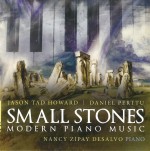 Nancy Zipay DeSalvo presents the work of two contemporary composers in her new recording Small Stones – Modern Piano Music (Navona Records NV 6139 navonarecords.com).
Nancy Zipay DeSalvo presents the work of two contemporary composers in her new recording Small Stones – Modern Piano Music (Navona Records NV 6139 navonarecords.com).
Jason Tad Howard’s Piano Sonata No.2 is not really a sonata in the formal sense. Rather, it explores eight short musical ideas that the composer calls Short Shorts, before bringing them together in a final expression amusingly described as a Not Quite So Short Short Short. Despite the light humour, the work is quite substantial and at times very technically demanding. The eight pieces are varied in style and mood, and kept to less than two minutes’ playing time. They tend slightly toward a minimalist form and finally emerge in the complexity of the last movement.
Daniel Perttu’s Sonata for Piano is inspired by a visit to Stonehenge. Perttu uses many compositional devices to evoke the ancient mystery associated with this landmark: minor modes, atmospheric writing and plenty of technical exploitation of the piano’s potential in evoking the moods he requires. This sonata is more challenging for the performer than the earlier work. DeSalvo handles it all with a confidence that speaks to her lifetime as a performer and teacher.
The two sonatas are a good selection and represent a fine example of contrasting approaches to contemporary piano writing.
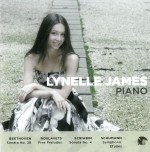 Lynelle James has recorded her first solo piano CD, Lynelle James Piano (Blue Griffin Recording BGR435 bluegriffin.com). She includes the Beethoven Piano Sonata No.28 in A Major Op.101, in which the third movement emerges as a masterpiece of deeply touching melancholy. It’s a very satisfying performance that is even more thrilling for the energy that erupts in the final movement. Her command of the keyboard is inspiring, especially in the frequent restatements of the fugal subject in the bass line.
Lynelle James has recorded her first solo piano CD, Lynelle James Piano (Blue Griffin Recording BGR435 bluegriffin.com). She includes the Beethoven Piano Sonata No.28 in A Major Op.101, in which the third movement emerges as a masterpiece of deeply touching melancholy. It’s a very satisfying performance that is even more thrilling for the energy that erupts in the final movement. Her command of the keyboard is inspiring, especially in the frequent restatements of the fugal subject in the bass line.
Some of James’ academic work has focused on the life and music of Russian avant-garde composer Nikolay Roslavets. It’s natural that she would use her first recording to bring this lesser-known repertoire to public attention. Roslavets’ Five Preludes reveals an ethereal and somewhat mystical language that James captures with conviction and authenticity. The music is replete with dynamic and emotional changes and moves strongly in the direction of atonality while never quite losing a tonal centre, however distant.
Her performance of the Scriabin Sonata No.4 in F Sharp Major Op.30 is extraordinary. The two movements are of such contrasting character, it’s difficult to believe they’re by the same composer. James understands the core of Scriabin’s expression and holds the work together wonderfully.
The Schumann Symphonic Etudes Op.13 concludes the CD. Structured as a theme and variations, the bulk of the piece is a series of etudes on the opening idea. As such, it quickly becomes a beautiful display of keyboard technique and varied musical devices that Schumann conceived in his own brilliant way. James plays these with flair and an expansive grasp of their symphonic scale.
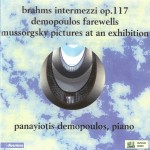 Panayiotis Demopoulos’ latest recording Brahms, Demopoulos, Mussorgsky (Diversions ddv 24166 divineartrecords.com) is his third and includes one of his own compositions, Farewells for Piano. The work is a tribute to his two principal teachers in the UK. It’s structured in four parts, each representing a farewell offered in one of the four seasons. Demopoulos writes that the work has no explicit program beyond its title. The four short pieces are very modern in their language and surprisingly abrupt in mood change.
Panayiotis Demopoulos’ latest recording Brahms, Demopoulos, Mussorgsky (Diversions ddv 24166 divineartrecords.com) is his third and includes one of his own compositions, Farewells for Piano. The work is a tribute to his two principal teachers in the UK. It’s structured in four parts, each representing a farewell offered in one of the four seasons. Demopoulos writes that the work has no explicit program beyond its title. The four short pieces are very modern in their language and surprisingly abrupt in mood change.
The main work on the CD is the Mussorgsky Pictures at an Exhibition. Demopoulos uses the 1931 edition edited by Pavel Lamm that corrected the numerous and questionable portions of the 1886 version edited by Rimsky-Korsakov. The 16 short pieces that comprise the Pictures encompass the entire expressive spectrum and call upon the pianist to be everything from sprite to superhero. It is Mussorgsky’s demand for contrast on such an enormous scale that presents performers with the daunting task of playing the piece complete in live performance. At least the recording studio offers the respite of breaks between takes.
However Demopoulos did it, it’s breathtaking. By the time he’s portrayed little chicks, the busy market place, the realm of the dead and arrives at the Great Gate of Kiev, awe is all that remains.



